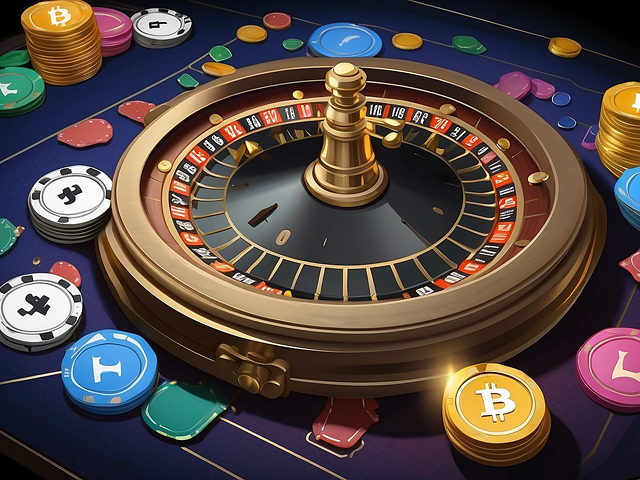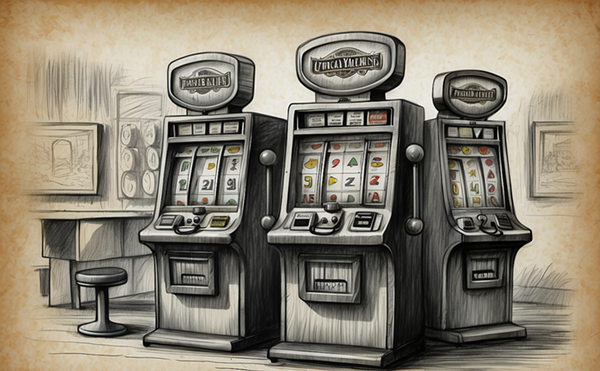Blackjack is a casino card game with the primary aim of beating the dealer's hand without exceeding 21 points. Players must understand card values and the basic procedure of game rounds to play effectively.
Blackjack Objective
The goal of blackjack is straightforward: to achieve a hand whose cards total closer to 21 than the dealer's hand, without surpassing 21. This winning condition is known as 'blackjack' when achieved with an initial two-card hand.
Card Values
In blackjack, cards are worth their face value with two exceptions: all face cards (kings, queens, and jacks) are valued at 10 and aces can be either 1 or 11 depending on what is more favorable to the hand. The table below shows the card values:
| Card | Value |
| 2-10 | Face value |
| Jack, Queen, King | 10 |
| Ace | 1 or 11 |
Gameplay Procedure
The game starts with each player being dealt two cards, typically one face-up and one face-down. The dealer also receives two cards, normally one face-up and the other face-down. Players then decide how to play their hand with options to 'hit' (draw more cards) or 'stand' (keep their current hand), among a few other choices. If a player's hand exceeds 21 points after hitting, they 'bust' and lose automatically regardless of the dealer's hand. If the dealer busts, all remaining players win. If the final hands are equal, it is a 'push,' and the player's bet is returned.
Table Layout and Equipment
When entering a casino, one will find that the blackjack table is a key piece of equipment for the game, strategically designed for player interaction and game flow.
The Blackjack Table
The blackjack table is often semi-circular and can accommodate 1 to 7 players. Each table is equipped with a felt surface marked with betting spots where players place their wagers. The dealer stands on one side—usually the straight edge—while players are seated on the opposite curved side.
The Shoe and Decks
Blackjack is played with one or more standard decks of 52 cards. These decks are kept in a device called a shoe, which allows the dealer to easily deal cards one at a time. Casinos usually use multiple decks to minimize the likelihood of card counting—a strategy used by some players to gain an advantage.
Player Positions and Betting Areas
Player positions are designated spots at the table where individuals can sit and play their hands. Adjacent to each player's seat is the betting area, a designated space on the table surface where chips are placed to make wagers. The number of betting spots corresponds to the number of player positions at the table.
Chips and Their Value
Casinos use chips as a substitute for real money to place bets. They come in various colors, each signifying a different value. Commonly, white chips represent $1, red chips signify $5, green is for $25, and black represents $100. These chips are stored in a chip rack on the table, easily accessible by the dealer.
Player Actions
In blackjack, the player's decisions directly affect the game's outcome. Understanding when to hit, stand, double down, split pairs, or surrender is crucial for improving the odds of winning.
Hit or Stand
Players decide to hit to receive an additional card or to stand to stop receiving cards, based on their current hand's value. The goal is not to exceed 21 but to reach a hand value that beats the dealer's.
- Hit: If their hand is well below 21, players may choose to take another card.
- Stand: When players are satisfied with their hand value or are concerned another card could cause a bust, they opt to stand.
Double Down
Opting to double down means the player is confident enough to double their bet on the condition of receiving only one more card. This move is strategic when a player has a hand total of 9, 10, or 11, potentially reaching 21 with one more card.
Splitting Pairs
If a player's initial two cards are a pair (e.g., two aces), they may decide to split into two separate hands. Doing so requires placing an additional bet equal to the first. Each hand is then played independently, which can potentially double the player's chances of winning, or losing.
- Pair of Aces: Always split a pair of aces to maximize the chance of achieving blackjack (21) with either hand.
Surrender
When a player chooses to surrender, they forfeit half their bet and end their participation in the current round. This option is a last resort, best used when the player's hand significantly underperforms against the dealer's visible card.
Advanced Strategies
In mastering blackjack, one must apply advanced strategies such as an optimized basic strategy, insurance betting, and card counting techniques to decrease the house edge and improve winning chances. The adept player understands these tools and employs them judiciously.
Basic Strategy
The backbone of sophisticated play is the basic strategy, which provides the best play for every hand combination. At the heart of this tactic is a chart that recommends whether to hit, stand, double down, split or surrender. For example:
- Always hit if the hand value is 8 or less.
- Stand when the hand value is 12 to 16 and the dealer's upcard is between 2 and 6.
- Always stand with a hand value of 17 or higher.
It is crucial for players to memorize the basic strategy chart and to abide by it, ensuring they make decisions that statistically favor the best possible outcome.
Insurance Betting
Insurance is a side bet the player can make when the dealer's upcard is an ace. It pays at 2:1 odds. Experienced players usually advise against taking insurance:
- The bet is essentially a wager that the dealer's hole card is a ten-value card, resulting in blackjack.
- A winning insurance bet typically pays 2:1, but the odds of the dealer having blackjack are approximately 9:4, which is not an even payoff.
Given that the odds are against the player, insurance betting often does not favor them unless they are counting cards and discern a high proportion of ten-value cards remaining in the deck.
Card Counting Techniques
Card counting is a technique used to track the ratio of high cards to low cards remaining in the deck. It can guide players on betting size and the application of basic strategy. Common methods include:
- Hi-Lo System: Assigning a value of +1, 0, or -1 to each card seen and maintaining a running count.
- KO System: Similar to Hi-Lo, with a slight variation in the value of certain cards.
Card counting is legal, but casinos may restrict or ban players they suspect of counting cards. This technique requires practice and concentration, especially in a casino setting where multiple distractions are present.
Betting and Payouts
In Blackjack, understanding betting structures and payouts is crucial for any player. Effective bankroll management and knowledge of the odds can significantly influence the game's outcome.
Types of Bets
Players must place their initial bets before any cards are dealt. The minimum and maximum bet amounts are typically displayed on the table, and players should choose their bet within these limits, keeping bankroll management in mind to avoid depleting their funds too quickly.
- Main Bet: The mandatory bet placed at the start of the game.
- Double Down: Doubling the initial bet after seeing the first two cards, in exchange for one additional card.
- Split: If the first two cards are of the same value, a player may split them into two separate hands with a bet on each.
Understanding Payouts
Payouts in Blackjack are determined based on the type of win.
- Regular win: Pays at a 1:1 ratio. A player receives an amount equal to their bet.
- Blackjack win: Traditionally pays at a 3:2 ratio. On a $200 bet, this yields $300.
- Some casinos offer a lower 6:5 ratio, reducing returns over time.
Players should always verify the table's payout rules as they can impact the overall odds of the game.
Side Bets
Side bets are optional wagers placed at the start of a round, predicting various outcomes separate from the main hand result.
- Insurance: If the dealer's upcard is an Ace, a player can take insurance against the dealer having a blackjack. Insurance usually pays at 2:1 odds but is generally a poor bet with high house advantage.
- Perfect Pairs, 21+3: Common side bets that pay out for specific combinations of cards at varying odds.
Playing Blackjack in Different Settings
Blackjack offers a versatile gaming experience that can be enjoyed across various environments, from the vibrant floors of physical casinos to the virtual realms of online gaming. Each setting presents a unique interface and mood, requiring distinct approaches and strategies.
Casino Blackjack
In brick-and-mortar casinos, the traditional blackjack table hosts a multiplayer environment where each participant plays against the dealer. Casinos typically use multiple decks to combat card counting. Here, the sensory experience of physical cards, chips, and the dealer's presence make for an engaging atmosphere. Players must be aware of the house rules which can vary from one casino to the other.
Key considerations when playing blackjack in casinos:
- Seats: Finding an open seat is the first step.
- Dealer reveals: Pay attention to when the dealer draws their cards, as it can influence your strategy.
Online Blackjack
Online blackjack caters to the digital age, offering quick access and convenience. It's suitable for those who prefer playing from the comfort of their home. Real money transactions are digital, and random number generators determine card distribution.
Distinct characteristics of online blackjack:
- Accessibility: Play anytime from any device with internet.
- Game varieties: Various formats and rule sets are available at the click of a button.
Live Dealer Blackjack
For players looking for a compromise between the physical and online realms, live dealer blackjack is a popular choice. It streams a live video feed of a real dealer dealing cards in real-time, capturing the essence of a casino experience. Real money bets are placed virtually, and players can interact with the dealer through chat.
Traits of live dealer blackjack:
- Authenticity: Enjoy a real casino feel with human dealers.
- Convenience: Experience live blackjack without leaving your home.
Etiquette and Tips
Casino Blackjack Etiquette
One enters the blackjack arena not just with the intent to win but also to engage with a community that values decorum. They should:
- Wait for a break in the action before joining a table, generally after a hand is completed.
- Use hand signals such as a hand-wave over the cards to stand or a tap on the table to hit; these are universally recognized and minimize misunderstandings.
- Never touch the chips once the cards are dealt and the game commences as it helps prevent disputes over bet amounts.
- Refrain from touching their cards in games where they are dealt face up.
- Be courteous to the dealer and fellow players, avoiding loud and disruptive behaviors.
- Tip the dealer if they are enjoying the experience. Tipping can be done by placing a side bet for the dealer or by handing them a chip directly.
Online Blackjack Tips
While online blackjack offers a different environment, there are still key tips they should follow to maximize their experience and potential for success:
- Practice with free games before playing with real money to get accustomed to the pace and feel of online play.
- Set a budget before starting and stick to it to avoid the common pitfall of chasing losses.
- One should always have a strategy card on hand; it is an advantage of playing online, as one can reference it without worrying about slowing down the game.
- To prevent busting, advise players to learn basic blackjack strategy, which guides them on when to hit, stand, double down, or split, based on their hand and the dealer's up card.
- Resist the temptation to take insurance, as it’s generally considered a poor bet with a high house edge.
Managing Your Bankroll
Effective bankroll management in blackjack is pivotal to long-term enjoyment and potential success. Players must be meticulous in setting their budget and understanding the game’s house edge.
Setting a Budget
When allocating funds for blackjack, a player should define a budget that aligns with his or her financial limits. This budget, or bankroll, is the total amount of real money set aside exclusively for gaming purposes. As a rule of thumb, a bankroll should consist of funds a player can afford to lose without financial strain. A common strategy is to have enough for 100 to 500 bets to provide a cushion against variance.
- Determine the maximum amount to use for blackjack.
- Divide the bankroll into parts for various sessions or days.
It's crucial for a player to stick to this budget strictly to prevent the all-too-common scenario of chasing losses which often leads to a bust.
Understanding House Edge
The house edge is a percentage representing the casino's statistical advantage in any given game. In blackjack, this edge is typically low, which means with the right technique, the player can influence their chances of owning a winning hand.
- Learn Basic Strategy: This can reduce the house edge to less than 1%.
- Avoid Side Bets: These often have higher house edges.
- Payouts: Familiarize oneself with the payouts for a natural blackjack and other winning hands.
Important Variations and Side Rules
In blackjack, player advantage can significantly fluctuate based on the variations and side rules applied. Understanding these changes is essential for strategizing effectively.
Soft 17 Rule
In some variations of blackjack, the dealer must hit on a soft 17 (a hand containing an ace valued as 11 and additional cards that total 6). This rule slightly increases the house edge as it gives the dealer a chance to improve their hand. Alternatively, if the dealer stands on a soft 17, it is advantageous to the player.
Blackjack Variants
Blackjack has several variants, each with distinct rules. For example:
- European Blackjack: Typically played with two decks, the dealer does not check for blackjack until after players have completed their actions. Players may only double down on hands with a value of 9, 10, or 11.
- American Blackjack: Usually involves 6-8 decks and allows more leniency. Players can double down on any two cards and the dealer checks for blackjack before players take their turns.
Each variant requires specific strategies, and understanding these can offer better odds for the player.
Special Payouts and Conditions
Payouts in blackjack are not uniform. One common example is the 3:2 payout for a natural blackjack. Some tables, however, may offer a 6:5 payout instead, which increases the house edge. Other conditions may include:
- Betting Limits: These vary from table to table, affecting both table selection and bankroll management.
- Double Down Restrictions: Some games only allow doubling on certain hand values (such as 9, 10, or 11).
- Split Limitations: The number of times a player can split a hand varies, affecting potential outcomes.
Legal and Responsible Play
When playing blackjack, it's critical for players to understand the gambling regulations that apply and to engage in responsible gaming practices to ensure a safe and enjoyable experience.
Understanding Gambling Regulations
Legal Age: Individuals must meet the minimum age requirement, which is typically 18 or 21, depending on the jurisdiction, to legally gamble. Casinos and online gaming platforms have terms and conditions that all players must agree to before participating in games.
Jurisdictional Laws: The legality of gambling on blackjack varies by country and state. Players should verify whether it is legal to gamble in their location and comply with any regulatory requirements.
- Online Platforms: Legitimate online blackjack sites are regulated and must operate with licenses from appropriate gaming authorities. Players should only use reputable sites where they are eligible to play.
Responsible Gaming Practices
Budgeting: Players should set a budget and limit their betting to what they can afford to lose. It's a cornerstone of responsible play to never bet more than one's bankroll permits.
- Self-Exclusion Programs: Many casinos and gaming sites offer self-exclusion tools, allowing players to voluntarily ban themselves for a certain period of time.
Customer Support: In case of problematic gambling behavior, players should reach out to customer support services provided by casinos or seek professional help.
- Setting Limits: Players are encouraged to use features that cap the amount of money and time spent on gaming sites to foster responsible play.
Frequently Asked Questions
In this section, we address common queries related to the basic gameplay, strategy, dealing, betting rules, and variations of Blackjack, providing clear and straightforward answers.
What are the basic rules of Blackjack?
The objective in Blackjack is to obtain a hand totaling 21 or as close to it as possible without exceeding it, while also having a higher hand value than the dealer. Players go 'bust' if their hand exceeds 21, leading to an automatic loss.
What is a simple strategy to follow while playing Blackjack?
Players are advised to always stand on a hand of 17 or higher, hit on a hand of 11 or less, and make decisions on hands between 12 and 16 based on the dealer's upcard, standing if the dealer shows a 2 through 6, and hitting if they show a 7 through ace.
How do you deal cards in Blackjack?
At the start of a Blackjack game, each player receives two cards, typically one face up and one face down. The dealer gives themselves one card face up and one face down. After the initial deal, players take turns to hit or stand, seeking the best hand value.
What are the betting rules in Blackjack?
Before any cards are dealt, each player places their bet. Players can then decide to 'double down', 'split', or 'surrender' based on their initial hand and the casino's specific rules. Each of these actions comes with additional betting requirements.
How does one play Blackjack with two players?
In a two-player game of Blackjack, one player acts as the dealer and the other as the player. The dealer is responsible for dealing cards and the gameplay follows the standard rule where the player's goal is to beat the dealer's hand without exceeding a total of 21.
What are the differences between 21 and Blackjack?
The term '21' generally refers to the basic game involving reaching or getting as close to the total hand value of 21 without going over. 'Blackjack' typically includes additional features such as insurance, splitting pairs, and doubling down, and awards a higher payout for a hand consisting of an Ace and a 10-value card dealt as the initial two cards.
For more information please contact us: [email protected]






